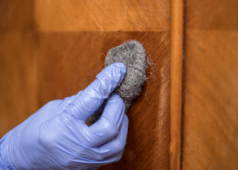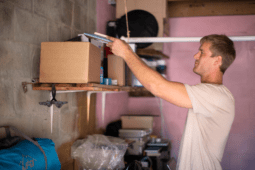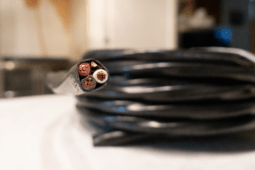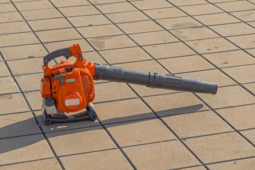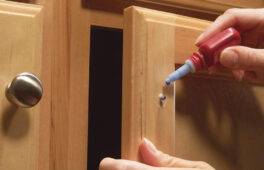How to: Mount Posters and Art to Plywood for an Affordable Modern Look
![[image credit] ManMade DIY Mounting odd-shaped posters on plywood](https://s3.amazonaws.com/manmadediy-uploads-production/photos/24480/DSCF1004_large.jpg?1421631556)
In my hometown there’s a poster shop that makes letterpress posters for every band that plays at The Ryman Auditorium. The fun part is you never know what size the poster will be and you can count on the size being something that could only be framed in a custom size. Custom framing is expensive! Here’s a simple way to mount gig posters or any oddly-sized art you might want to hang.
What You’ll need:
- A poster (read on to see what kind you can actually use)
- A container of Mod Podge (matte finish)
- Paint Brush
- Craft Paper
- Ink Roller (like what you’d use for block printing)
- 1/2 sheet of birch plywood cut to the dimensions of your poster
- Frame mounting hardware
Before you begin, it’s very important that your poster is able to withstand water-based Mod Podge. The poster I’m using is about 100# (thick) paper and the ink is an oil-based ink that will not bleed when wet. If your piece is acrylic, water-based or washable you need to research methods for applying a polyurethane glaze.
Before you begin gluing, measure and cut some birch ply to the exact size of your poster. I used the high-end birch because the edging of the board is more consistent and clean, whereas cheaper ply can have dark gaps and cracks that won’t look as nice around the edges.
![[image credit] ManMade DIY Mount an odd-sized poster on plywood](https://s3.amazonaws.com/manmadediy-uploads-production/photos/24481/DSCF1007_large.jpg?1421632131)
First, I put down some craft paper to keep my workspace clean. Then, I applied Mod Podge to the back of the poster. This will wet the poster and keep it from bubbling up when you place it on top of the plywood. Work quickly, this stuff dries fast.
![[image credit] ManMade DIY Mount an odd-shaped poster to plywood](https://s3.amazonaws.com/manmadediy-uploads-production/photos/24482/DSCF1010_large.jpg?1421632283)
Quickly pour some Mod Podge on the face of your plywood and spread it evenly.
![[image credit] ManMade DIY Mound an odd-shaped poster to plywood](https://s3.amazonaws.com/manmadediy-uploads-production/photos/24483/DSCF1017_large.jpg?1421632358)
Place the poster onto the plywood surface. If you put enough Mod Podge, you will be able to shift and slide it around to line up with the edges of the poster.
![[image credit] ManMade DIY Mount an odd-shaped poster to Plywood](https://s3.amazonaws.com/manmadediy-uploads-production/photos/24484/DSCF1025_large.jpg?1421632443)
Next, smooth out the poster and get as many bubbles out as you can. I used an ink roller to smooth everything down. Any kind of roller would work just fine.
![[image credit] ManMade DIY Mound an odd-shaped poster to plywood](https://s3.amazonaws.com/manmadediy-uploads-production/photos/24485/DSCF1031_large.jpg?1421632520)
Now, cover the top of the poster with a liberal amount of Mod Podge. You’ll likely have to use your finger to smooth out some of the edges where the paper bubbles up, just hold it down for a few seconds to let the paper soak in the glue.
When everything is covered, go back over with your brush and make uniform vertical strokes. Allow everything to dry for about an hour. You can add more coats and sand to a smooth finish if you’d like. I personally love the textured look after it dries.
After everything dries, add some mounting hardware like hooks and wire or route a keyhole in the back.
![[image credit] ManMade DIY Mound an odd-shaped poster to plywood](https://s3.amazonaws.com/manmadediy-uploads-production/photos/24486/DSCF1041_large.jpg?1421632737)
And you’re golden! I really love the modern look of the plywood edge and how it offsets from the wall like a decent frame does. Sure beats the college days with thumb tacks!
![[image credit] ManMade DIY Mound an odd-shaped poster to plywood](https://s3.amazonaws.com/manmadediy-uploads-production/photos/24487/DSCF1044_large.jpg?1421633009)

